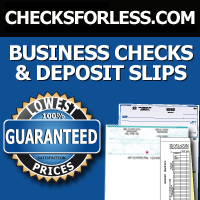The equity section of the balance sheet looks different depending on the legal structure of your business. The most common entity types are corporations, partnerships, and sole proprietors. In this article, we’ll take a look at what the equity section of the balance sheet looks like for sole proprietors.
The Equity Section
As a reminder, the balance sheet has three major sections: assets, liabilities, and equity. The equation Assets = Liabilities + Equity is true for all entities. For a sole proprietor, equity is called Owner’s Equity. There are typically two accounts listed: the Owner’s Capital Account and Owner’s Draw Account.
Owner’s Capital Account. This balance represents how much money the owner has put into the business. Also included are cumulative business income or loss amounts from prior years.
Owner’s Draw Account. This balance represents how much money the owner has taken out of the business. Since a sole proprietor does not get a paycheck, taking money out of the business via a draw is how they get their money.
A third account will show up if you run a balance sheet report in your accounting system on any date during the year: Current Year Earnings.
Current Year Earnings. This balance is the same as the net income on the year-to-date income statement. It represents the profit in the business.
On a formal balance sheet for external purposes, only one account will show and that’s the Owner’s Capital Account. The draw and the current year earnings will roll into that account.
Salary vs. Draw
It’s important to distinguish between the idea of a salary and a draw. In corporations, owners receive salaries in the form of paychecks, where payroll taxes are taken out and W-2s are issued at year-end. The salary and taxes are deducted as expenses in the corporation’s income statement. For a sole proprietor, this is not at all how it works.
A sole proprietor has no salary. There is no payroll expense or payroll taxes on the income statement for the owner. The owner could have employees, and those payroll expenses would be shown on the income statement, but there is nothing for the owner.
The owner takes draws, which is not an expense. Draws are a reduction in equity. They do not affect profits. They do not change taxes owed. An owner can take a lot of money out of the business, and there is no impact on profits. There is definitely an impact on cash flow though!
A sole proprietor does pay payroll taxes in the form of self-employment taxes. They simply do it on their IRS Form 1040 as opposed to payroll tax forms that a corporation would use.
The equity section can be the most difficult section to understand on the balance sheet. Hopefully, the explanation above will provide a bit more clarity so you can better understand how to read your business’s financial statements.





Leave a Reply